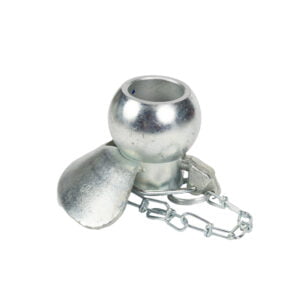
We are struggling with the topic of actuators! What are they, how are they built, and how do you choose them?
Hydraulic cylinders, also known as “hydrostatic cylinders” or “hydraulic cylinders,” are devices whose design is not particularly complicated. They can be found among others. In agricultural machinery, construction and various industries. What else is worth knowing about them? What types of actuators can be distinguished and how to choose them? We answer.
What are hydraulic cylinders?
Hydraulic cylinders are components of any device that moves or lifts heavy weights. For example, agricultural machinery, excavators, balers, rollers, front-end loaders, as well as dump trucks are equipped with them. The principle of actuators is simple: they convert energy from a liquid (preferably a thickened oil) into mechanical energy. This allows you to set certain components in motion (the piston, diaphragm or plunger in this case perform a reciprocating motion). As for the oils themselves, they are properly compressed and create pressure, which is then converted into the aforementioned energy.
Construction of the hydraulic cylinder
Hydraulic cylinders are based on the action of the stem, which is most often a piston (but can also be a diaphragm or plunger). The trunk is the most essential performance element. It allows generating high energy. In addition, it is sealed with a gasket, so that the liquid inside the structure does not escape outside that component. Also important is the piston rod, which is the elongated part attached to the piston. It allows mechanical energy to be transferred to moving parts of the machine, such as the excavator arm, which is able to move up and down.
Other actuator components that can often be found are:
- stuffing box – guides the piston rod so as to direct the forces inside the cylinder toward the axis,
- foot – is the rear and front cover of the actuator,
- Guiding elements – thanks to them you can maintain the correct path of movement.
All of the above components are located in a housing, which is usually in the form of a cylinder. It should be made of durable material, selected for the application, so that the whole thing is resistant to mechanical damage or high temperatures, for example.
Division of hydraulic cylinders
Hydraulic cylinders, due to the way they work, can be divided into:
- Single-acting actuators – these work in one direction, usually with the help of a spring that causes the piston to return to its original position; they are used where force is needed in one direction only,
- Double-acting actuators – they work both ways, as the fluid is forced alternately into two chambers, which leads to pressure with the same force on both sides of the piston; such actuators are usually used in devices where greater control of movement is required, so, for example, in industrial machinery.
In addition, by construction, one can distinguish:
- Plunger hydraulic cylinders – are single-sided cylinders that appear only in pistonless varieties and that develop only a pushing force,
- Hydraulic rotary cylinders – these are used in shotcrete machines to rotate the concrete nozzles,
- Telescopic hydraulic cylind ers – they are built with separate cylinders, in such a way that one is placed above the other, this increases the range of the working stroke compared to other hydrostatic cylinders; in other words: they allow work where the usual working stroke is not enough.
Hydraulic cylinder failures
There are many factors that can contribute to the failure of a hydrostatic actuator. High temperatures, large pressure spikes, contaminants getting into the working fluid, unforeseen chemical reactions… All of these can lead to spoilage of the component in question. Rarely is there a sudden failure – usually the device gives us some signals beforehand. When something is wrong, you may hear the actuator running louder than before, and there may also be cooing and grinding noises. Pressure and temperature spikes are also sometimes noticeable at that time. It is worth remembering that you should not wait to replace a new actuator – even if it means not being able to perform certain jobs for a while.
Which hydraulic cylinder should I choose?
Wondering which hydraulic cylinder to choose? First of all, you should consider such parameters as lifting capacity, stroke, height.
For example, if in your device the actuator is located under the box, the lifting capacity should be the weight of the load and the weight of the cargo box – these parameters are expressed in tons.
The stroke is related to the distance between the point where the actuator arm is attached and the tipping hinge and the tipping angle.
If your actuator will be involved in transport at great heights or distances that exceed the capabilities of conventional actuators, it is worth opting for telescopic actuators.
Are you interested in actuators? If so, browse Exparto’s offer and choose the perfect model for you!

